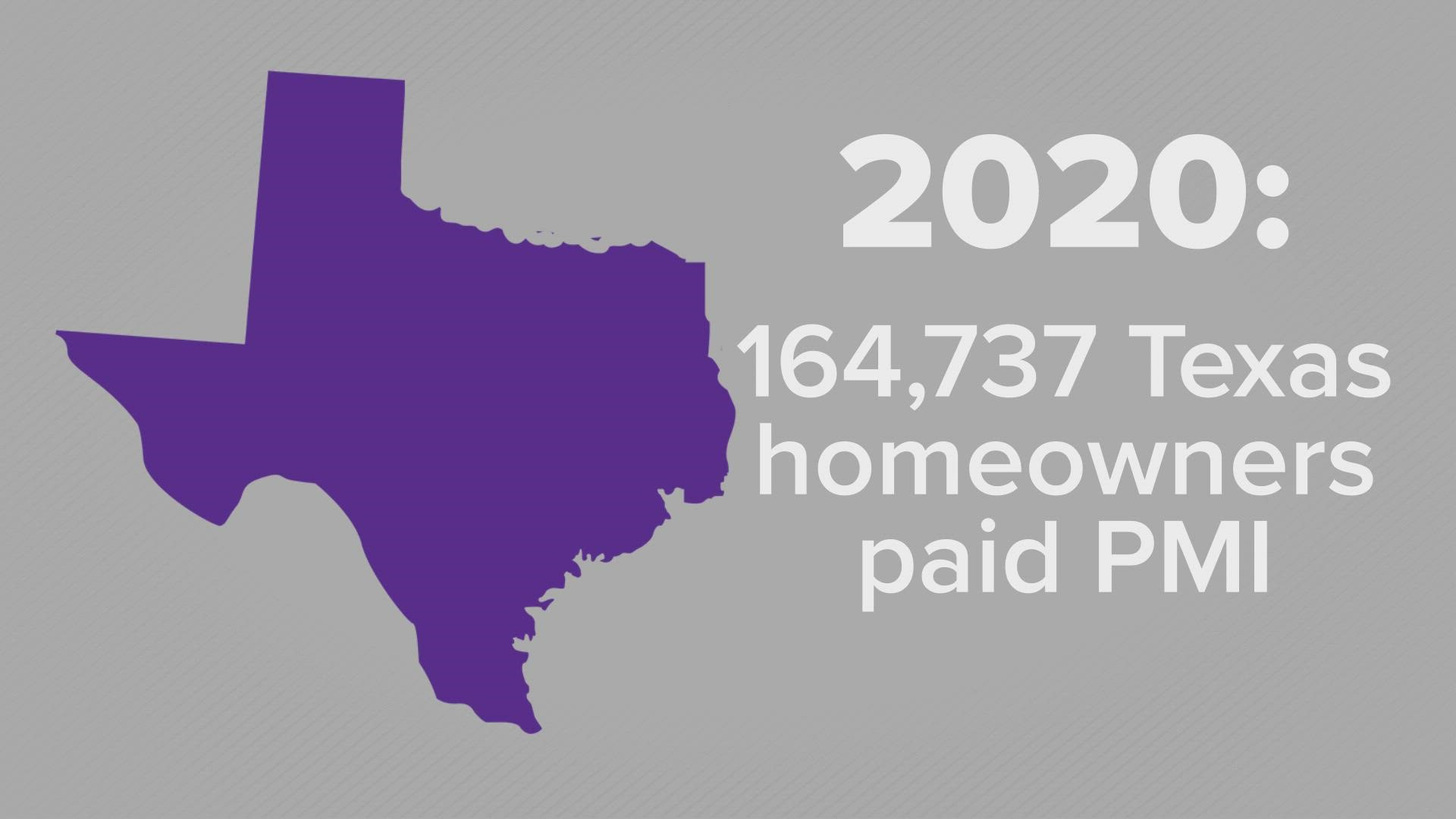DALLAS — Just recently, someone suggested a Right on the Money segment that could save a lot of homeowners a couple hundred dollars per month. It turns out, we had covered this topic in a Right on the Money takeover of a regular newscast on WFAA earlier this year, when we talked about how to get rid of private mortgage insurance, or PMI.
Considering that the person making this suggestion hadn’t seen the program, it’s obvious that you can never have TMI (too much information) about PMI (private mortgage insurance). In 2020, a record number of Americans (more than 2 million of them) started having to pay PMI to get a home loan, according to a U.S. Mortgage Insurers report.
The organization points out that many Americans wouldn’t be able to get a home loan if it weren’t for PMI. USMI says in its report that "more than 40% had annual incomes below $75,000 and nearly 60% of purchase loans went to first-time homebuyers."
USMI estimates 164,737 of those homeowners who started paying PMI in 2020 are in Texas.
80% is a magic number
If you don't have a big enough down payment, your PMI payment goes to an insurer that essentially agrees to protect your lender if you default on the loan.
For most mortgage loans, PMI is required if you finance more than 80% of the home price. That's the magic number: 80%.
So, let's say you bought a $300,000 house in 2019. Your down payment was $30,000. That's just 10%, meaning that you financed 90%, which is above the magic number of 80%. So, you pay PMI until you make enough premium payments to get below the magic number. That can take many years.
Here's a potentially faster way to stop paying PMI if you live in a booming real estate market, like several in Texas
Here's another way. PMI is based on your Loan-to-Value ratio, basically how much principal you still owe on your mortgage divided by the current value of the property.
In just the past couple of years, home prices in D-FW and many other hot housing markets have soared by 25% and more.
What if the home you bought in 2019 for $300,000 appreciated like that and is now worth $375,000? And in those couple of years, you have brought down your initial principal from $270,000 to something like $256,000. Your Loan-to-Value ratio would be somewhere around 68%, well below the 80% threshold. You may now be able to ask your lender to remove the PMI requirement from your loan much earlier.
The actual Loan-to-Value ratio 'magic number' you must reach may be several percentage points lower than 80%, especially depending on how long you have lived in the home. Your lender likely requires a 'seasoning' period (the time you have been in the home) of at least two years to even be eligible to shed PMI payments this way. Click here, here, and here for more good information on the topic.
In addition to that, you need to have been making your mortgage payments on time. And you will have to pay hundreds of dollars for a new appraisal to prove your home’s increased value.
Before you take any steps, especially one that involves you spending money (for instance on another appraisal), your first move should be to talk with your lender about their policies. Run the numbers with them to see if this path to removing PMI is, in fact, your best option...or if there might be a more advantageous option.

